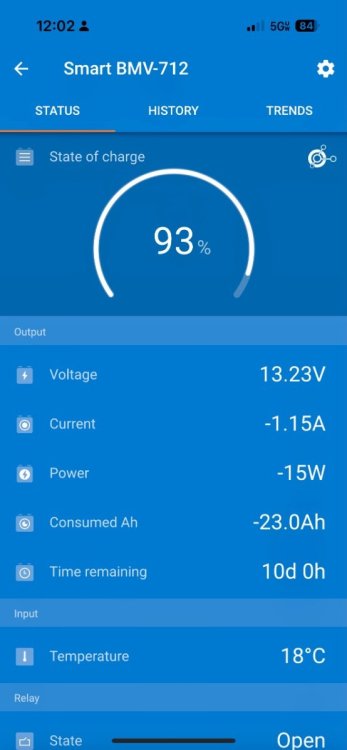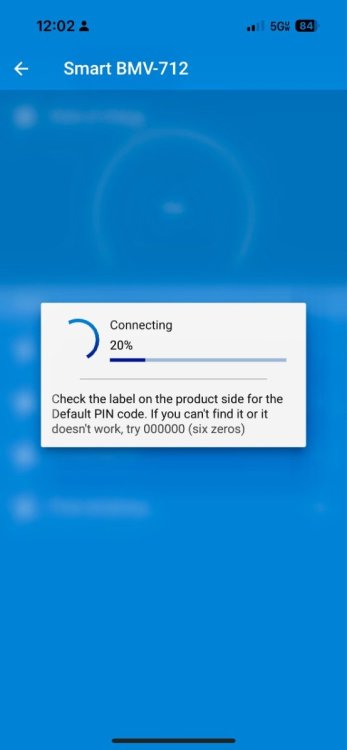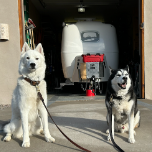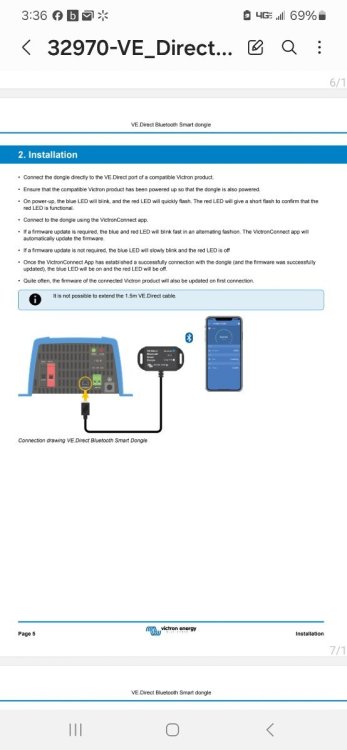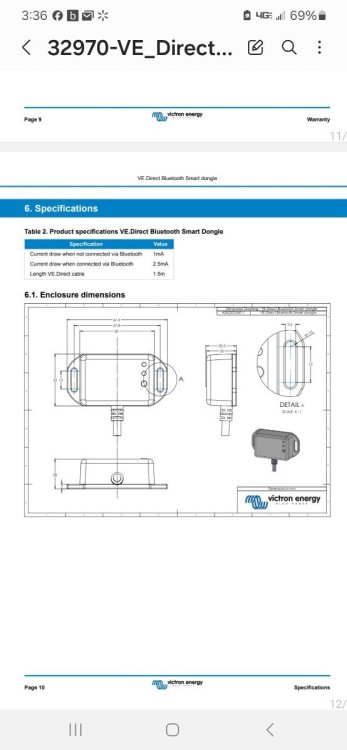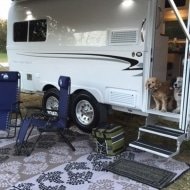Leaderboard
Popular Content
Showing content with the highest reputation on 02/25/2024 in all areas
-
Sorry that I may have added to the confusion. Apparently, the 2000 watt inverter installed in the 2018 Oliver was an inverter only without a battery charger built in. The 2000 watt inverter installed in my 2020 LE II is an inverter/charger. That is why I have a more sophisticated wall panel with led readout. In your 2018 Oliver, the batteries are charged by the Progressive Dynamics Converter/Charger under the dinette that also serves as the 12volt and 120 volt service panel (breakers and fuses). The PD Converter/Charger in your trailer has a fixed maximum charging rate of either 45 amps or 60 amps depending upon what model Oliver installed. The PD Converter/charger is perfectly adequate if you have lead/acid batteries or AGMs and charging at the maximum charging rate of 60 amps should not overtax a 1000 watt generator. If you ever upgraded to lithium ion batteries though, you would need to replace the PD converter/charger with a charger that offers a lithium ion charging profile built in. Progressive Dynamics makes one that is a drop in replacement for the one you have. Alternatively, you can install an updated combined converter/charger to charge your batteries and then bypass the charger in the PD Converter. That is what the factory did in my 2020 LE II. I do have a background in grid scale power and high voltage transmission, but the information above I learned the hard way when I switched out my lead acid batteries for LFP04 lithiums right after I picked up my 2020 LE II. Oliver started offering the lithium option in mid-model year about a month after I took delivery of mine so I had to figure it out myself. Information on this forum helped me out considerably.4 points
-
Because we always carry a spare 20 lb. propane tank, we opted to forego the front and rear low-pressure propane connectors on our Hull #1291. We prefer to be able to position our propane camp stove quite a distance from the trailer anyway. Your report has confirmed that our choice was the right one for us.3 points
-
With no offense intended, I believe there is some questionable advice in this thread. In particular, it is counterintuitive to me that reducing the input amperage to the inverter is the best way to limit the level of charging current that the inverter is delivering into the batteries, especially when the inverter has a setting (#24) designed specifically for that function. Wandering Sage Brush is apprehensive about using the smaller Honda 1000 to charge his house batteries while boondocking. There is nothing to be nervous about as many of us do it all the time. The only issue you need to be aware of is ensuring that the combination of trailer loads (120 volt loads and 12 volt charging load) is less than the maximum output of the generator. If you try to run higher loads (i.e., greater watts) than the generator can produce, the generator will overload and shut down. The table above showing inverter settings are for a 3,000 watt inverter. Setting 28 is factory defaulted to 25 amps because 25 amps * 120 volts = 3,000 watts. If you lower the amperage limit in Setting 28 down to lets say 15 amps, you are turning your 3,000 watt inverter into an 1800 watt inverter because 15 amps * 120 volts = 1800 watts. There is no need to do that. If you want to charge your batteries with a 1000 watt generator, then you need to limit the draw on the generator to less than 1,000 watts. If you want all the available 1,000 watts to go into your batteries, then there are two steps you need to take when you decide to charge. First is to turn off your inverter and any 120 volt loads if you want to all the generator output to go into your batteries. You don't want any 120 volt trailer loads drawing on the generator at the same time you are charging the batteries. Second, you need to reduce the amperage limit in Setting #24: Charger Current. The charger typically charges at about 14 volts when the batteries are getting close to full. Since volts x amps = watts, 1000 watts into the batteries is going to require 71 amps of Charge Current (14 volts * 71 amps = 1,000 watts) . Adjusting for losses and generator derating at altitude and in higher temperatures, you should probably limit the watts from the generator at no more than 900 watts which equates to 64 amps (900 watts / 14 volts = 64 amps). So whatever inverter/charger you have, set the max charging current at 60 amps and your Honda EU1000 will probably charge just fine without overloading. If you are running the Honda 1000 and you are also getting 20 amps from your solar panels at the same time, then you will be putting 80 amps into the batteries (60 amps from the generator and 20 amps from the solar). This is equal to 1,120 watts (80 amps x 14 volts = 1,120 watts) You can leave the Charge Current setting at 60 amps all the time if you want unless you want your batteries to charge faster when you are on shore power. If so, just increase the max charging amps in setting # 24 before you go back on shore power.3 points
-
The only settings I had to change in my 2000W inverter/charger was to change the charge setting from flooded batteries to a LFPO4 charging profile. Our early versions of the 2,000 watt model did not have a LFPO4 setting to switch to so I selected the "custom" battery option. I then set the custom absorption voltage to 14.6 volts (as recommended by the battery manufacturer) and I was done. The main reason you need to adjust the absorption voltage to a 14.4-14.6 volt level (consult your battery manufacturer for their preferred setting) is that the LFPO4 batteries require a higher voltage than flooded batteries to reach full charge, compared to the flooded or AGM batteries. To be confident how to do this with your model of converter/charger, you really need to consult the "Optional Equipment" manual that came with your Oliver. I just looked on the Oliver University and the factory manual they have posted is apparently a mid-2020 updated manual that appears to reflect a firmware upgrade to the units we have, since the manual on the Oliver site displays a LFPO4 setting in the menu, which my 2020 version does not show in the menu and definitely did not have. I would post a picture of my settings table from my manual, but it is across town in storage. PM me if you want me to retrieve my manual and post a copy of the settings menu here. I would be happy to do so.2 points
-
2 points
-
The remote display I have is part of Xantrex inverter/charger model that I have, not the PD Charger/Converter. When I elected the 2000 watt inverter/charger option, the factory kept the PD Converter/charger in place to serve as the breaker/fuse panel, but disabled the converter/charger function and instead wired the 2000 watt inverter/charger into the PD circuit/fuse panel. You would not need to change any settings to use a 1,000 watt generator to charge your AGM batteries since your converter/charger is has its own built in charging limit of 45 or 60 amps depending on the model. A 1,000 watt generator should be capable of charging the batteries at 60 amps since this will effectively limit the draw on the generator to about 840 watts (14 volts x 60 amps = 840 watts.) I you upgrade to lithium batteries, then you have two choices. You can replace your existing PD converter/charger with a more up to date version of the same model that has a lithium ion charging profile option built in. This is the lowest cost option, but you will be limited to a maximum charging current of 60 amps split among all your batteries . A superior solution but more expensive solution would be to keep your current PD converter/charger but upgrade your inverter to a 3,000 watt inverter/charger. The 3,000 watt inverter charger that Oliver installs can charge your batteries at a rate as high as 150 amps, thereby charging your batteries 2 1/2 times as fast as a 60 amp charger when you are connected to shore power. To charge with a generator at the 150 amp rate, you would likely need a generator that outputs a minimum of 2200 MW continuous, more if you want to simultaneously use any 120 volt appliances at the same time. I hope this is helpful.2 points
-
Toby I also have a 2018 Elite II. My procedure may not help you. But, after the Ollie wakes up from it winter's nap, I have trouble getting the Dometic refigerator started. I usually have to play with the on-off switch button, depressing the button multiple times and sometimes just holding the button in. So far, after a little time doing this the refrigerator finally starts and the lights on the control board come on. On another subject, in the future, you might want to add your year and hull # to the signature line, so people can see what Ollie you have and can help you better.2 points
-
I'm thinking two of the smaller 300s when they run another Black Friday sale. Two sitting sideways will fit nicely with enough room left over to mount a DC-to-DC charger on the wall behind them, huh. It will be a great Christmas gift for us and the Oliver!2 points
-
Was definitely worth it to us mostly because of my Father-in Law...I could see him smiling at us :) If you go, make sure to read the literature posted on the walls along the way!!! John2 points
-
We always carried the extra 20 lb. tank in past RVs. I really like being able to plug into the two 30's we have onboard. It was some work to remove the regulators in our grill and fire ring, but glad to have done so. I would prefer if OTT got rid of the rear one forever! What a dumb design! The front one should be built-in to the propane housing, 12" above where the current one is located, vs. just bolted under the frame. It would be safer and more usable. I do agree with you @Rivernerd. If I was to buy new, I would opt out of these connections and build one myself, since it is convenient. I was under the Oliver today and these LP fittings are on with more than Super-Glue. Tomorrow, I will spray some penetrant on the LP fittings... I have 2 weeks of other projects, before I can get back to this one!2 points
-
I assume you're plugging into a standard household outlet and using an adapter to convert your 30A Oliver cord to that outlet? Are all three prongs present on the adapter? If you unplug the fridge from the 120v outlet located under the sink, does the house GFCI still trip when you turn on the fridge breaker? If no, the fridge has an issue. If yes, the issue is in the circuit. Does the fridge run correctly on propane? On 12v?2 points
-
Yes, @Hokieman and @mountainoliver, that's what I meant, but didn't make clear. With a minimal ip21 rating, I'd want to seal that door to the outside, for both dust and moisture, very carefully, and if I needed venting for temp, I'd want it to be to the cleaner interior of the trailer. Thank you both for helping me out. I appreciate it. You both read my mind.2 points
-
I have the Xantrex PROwatt 2000 inverter in my 2020 LE II. It has Charge Current setting just like the 3000 watt version. The max charge current in the 2000 watt inverter is 80 amps (as opposed to 150 amps in the 3,000 watt inverter.) To set the charge current limit to less than the factory default of 80 amps, you just need to go into the inverter panel on the wall of the Oliver, enter into configuration mode, scroll to setting # 24 Charge Current, and change the setting. It only takes a minute or two. It is certainly not as easy as using a bluetooth app and I often have to refer to the manual again because the exact sequence of button pushing is easy to forget. But it works just the same as in the 2000 watt inverter.2 points
-
I too was agreeing with you and just adding another point of reference supporting your statement. I’ve been putting off adding extra holes in my battery compartment for no particular reason. I guess just waiting to see if and when they become necessary for our situation. Although, I’ve been tempted to add some on several occasions. Even to the point of making a fixture to prevent me from inadvertently drilling through the dinette seat back or the pantry wall at the bed.2 points
-
Agreed, LifePOH batteries do not require ventilation as they do not generate gas. My comment was intended to clear up what might be a misunderstanding by some readers. Lead-acid batteries generate gases during charging which may vent into the battery compartment, these are corrosive and flammable. That’s what the external vents in the door are for, and Oliver is required to put them there to meet RVIA standards. SeaDawg recommended sealing the external vents, which many of us have done, along with extra insulation. Venting into the basement isn’t required, as you have experienced, but it may help in temperature extremes, as many previous threads have discussed. For example, parking with the street side in full sun in Arizona in the summer @ 115F ambient. All I have done is cut two 2” holes in the sides of the battery box. I’ve noticed it is cooler inside the battery box on very hot days with the street side in the sun.2 points
-
I’m assuming Seadawg suggested venting to interior for temperature stabilization. Many owners have vented battery compartments to the basement, and some to the inner cabin. This helps the batteries operate closer to their optimum range, not too hot, nor too cold. You’ll notice a significant difference when monitoring your battery temps.2 points
-
Back in the day, Oliver used a tiny part of the facility. (We are #12.) I think it's actually measured in acres. When we picked up our trailer, it was parked in part of the very empty floor. We are so delighted to see the parking lot filled, and space used, when we visit. A very forward thinking family. Not to mention what they have done for the Hohenwald employment opportunities. In my humble opinion, it's been a great symbiosis, between the Oliver family, and the local economy. Most of the current Oliver folks don't know me, but even with a 2008, I'm treated with kindness and respect, on a timely basis. I'm sure @bugeyedriver and @ScubaRx remember the old days. We're a few of the original 50. It's fun to reminisce, but even more fun to see the growth of our favorite trailer. Old school, fuzzy photos, below. I'm so very proud of their progress. Great company culture. Great trailers. We took a chance when they were pretty much brand new. But, my engineer husband and I know quality when we see it.16 years in, we are happy campers.2 points
-
Doesn't really sound particularly dangerous: "The potential defect we identified is part of the propane tank/cylinder valve assembly that could result in a leak after disconnection from the grill- but only if you forget to close the barbeque tank/cylinder valve." (Emphasis mine.) I always make sure a tank is off before disconnecting the hose.1 point
-
The tanks are only ones that were used in the propane exchange program. If our tanks in our trailers have not been exchanged, this is a non issue. Below if from the CPC. GJ +++++++++++++++++++++++++++++++++++++++++++++++++++++++++++++++++++++ Recall Details Description: This recall involves EVAS 20 lb. propane exchange cylinders with model number EVAS – M0859, a serial number beginning with a “W,” and a date code of either “06-23” or “07-23.” The model number, serial number, and date code are stamped on the collar of the cylinder. While the cylinders were initially sold with an AmeriGas label, consumers could have exchanged these cylinders with other propane distributors who would have then placed their own branded sleeve/label on them. Remedy: Consumers should stop using the recalled EVAS 20 lb. propane cylinders immediately, close the top valve completely and return them to any AmeriGas Propane Exchange retail location for a free replacement. Consumers can find exchange retail locations at https://www.amerigas.com/locations/find-propane. Worthington advises consumers to close the valve on top of the cylinder completely when returning them.1 point
-
I would love to see pic's of that. One low and one high would facilitate natural convection. GJ1 point
-
Using the "Any Victron device that has the word "Smart" in it's name has Bluetooth connectivity" may open up another option. Can we combine my having the Victron 712 Smart Shunt in the battery box and your "Higher is better than closer" concepts? What if I connect the dongle to the shunt and run its five feet of cable up to the upper cabinets of the street side. Then extend the dongle forward until I run out of cable. At that location, stick the dongle to the ceiling of the cabinet. Much higher than under the dinette location, and not much further back. Your thoughts? GJ1 point
-
Thanks SeaDawg. The panel light reads On and Auto but I can't toggle to AC or DC or Gas (I'd happily take any one). None of these indicator lights are lit. Did not know about the multiple control boards. You are right....what a pita! I'll call dometic on Monday. My wife, who is an absolute all-star, is excited about the trip but not so excited about living out of a cooler for 3 weeks.1 point
-
We did.....on the way to the Q this year. 26 years ago we and the inlaws stopped there and the only one to visit was my late father in law. Since we poked fun at him he wouldn't divulge any details so we had to take a look for ourselves this year. I can only say one thing...."now we know" John1 point
-
1 point
-
Chukarhunter: Excellant explaination that hopefully everyone on this thread reads. Obviously you must have an electrical background and/or good working electrical knowledge. As far as the PROwatt SW2000 inverter wall panel in my 2018 Elite II, I have no inverter wall panel as you have described. The only PROwatt SW2000 inverter panel on the wall in my Ollie is the picture I have posted below. Could you post a picture of your PROwatt SW2000 wall panel in your 2020 Olilie, which may help others with that vintage inverter and how you described changing settings.1 point
-
We had a propane (LP) issue on our last trip. We arrived at our third stop and I setup the outside camp, the blanket, chairs, grill and fire ring, etc. Then I decided to start the fire ring, since it was getting late, and it gets warmer after the stones heat up. The fire ring flame was half of its usual force. I hollered at Chris, who was inside getting things ready for dinner, to start a kitchen burner. This is something we do each time we open the LP tank valve, so that we know there will be gas to the furnace later. The kitchen burner was also at half strength. I was puzzled for a while, and eventually checked the rear LP connection. You know that idiotic design where you have to release to bumper, revealing the sewer hoses, to hook up (why not mounted like the front one, aimed curbside)? Turns out the rear shut-off on that port was half open and it was leaking out of the cable connection without a fitting in place. It's not supposed to do that! I moved the shutoff to 90 degrees, and it stopped leaking. It had moved likely from the sewer hose hitting it over bumpy roads. The fire ring and kitchen burner were now again at full pressure. This useless rear connection is also dangerous in another way. They run a copper/brass line without protection directly under the frame. This is somewhat OK in front of the trailer wheels, but not a good idea near and behind them. One of several reasons to have the LP off when towing. I will be removing this line soon, certainly before our next outing. We never have a need to connect at the rear and never pulling the bumper to do so! I have a 12 ft line to a T-connection for grill and fire ring and they each have lengthy lines. We can connect at front and position the grill as far as the rear bumper if we need to. I will post info and pics on removing the rear LP line, just past the furnace T, which btw is also behind the trailer wheels. I will cap the rear line and likely add some form of stone-guard or protection. More on this coming soon!1 point
-
I think it's just you Art! (Given "the two knuckleheads" stayed outside.) I sometimes call ours "butthead" and Chris says, "That's not nice." I've driven by that stretch of I-10 some twenty times...1 point
-
Because my lithium batteries don’t require ventilation (I don’t know if all lithium batteries are similar) I sealed the ventilation holes in the battery compartment door and insulated the door with 1/2 inch thick closed cell neoprene foam. The only ventilation into the basement area in my installation are the two 7/8ths +/- holes left over from moving the #6 cables to the inside. So far my battery compartment temperature stays very close to the basement temperature.1 point
-
Time WELL spent! With twin 300's, you can easily power up a medium size gathering! Glad for your 100% success. GJ1 point
-
I m guessing that this used to be a reasonable recommendation before there were regulated loads and we still had incandescent lights. If the internal voltage was raised into what were closer to resistive loads, both the current and the power would go up. Not the usual case anymore, where we have mostly constant power loads.1 point
-
@rich.dev I do not believe that for our 2018 Elite II (with my Hull 354) and Xantrex PROwatt SW2000 inverter and Wandering Sagebrush's (Hull 364) with the original Xantrex PROwatt SW2000 inverter (which he does not have now) has anyway to change the amp output. There is no Wifi type connection to that 2018 inverter to make that modification. This inverter was before Lithium batteries. If I am wrong, someone please correct me.1 point
-
I spoke to the previous owner, who running a Honda 2200, set the current at about 18. For my little 1000, I’m going to run around 12. When it gets hot out, I’ll bring a bigger generator, either a 2000 or 2800, then set things higher.1 point
-
Good question! I don’t know, never tried, but I will just for you😎 and let you know. I did a simulated hookup by backing my F150 up to the Bulldog and did a test. I had no problem connecting to my Victron BMV-712 which has its own Bluetooth radio in the display and is installed under the SS bed. These 2 pictures show the BMV-712 Bluetooth off and on. Mossey Bluetooth off while I was in Ollie. Bluetooth on while I was in my truck.1 point
-
You purchased the model with the Victron comms: 12V 300Ah V2 Heated Bluetooth LiFePO4 Battery - Epoch Essentials (epochbatteries.com) Wondering what that does for you, that adding the Victron SmartShunt would not do? I already have this shunt and their smart Bluetooth dongle for communication purposes. This Epoch model is also 300AH without the Victron comms but slightly smaller, so thinking it would fit in the OTT OEM battery tray as-is. Are there other features that made you decide on the higher-end and slightly larger model vs. this one? 12V 300Ah Heated & Bluetooth LiFePO4 Battery - Epoch Essentials (epochbatteries.com) I just read your comment above again. It appears you ordered the smaller model but was supplied the V2 model instead since it was in stock, in time for your trip. Still wondering if the V2 model is worth it considering fit. Other V2 benefits?1 point
-
FYI: We bring our Honda EU2000i w/grounding plug if we expect several days of cloudy weather on a given trip. However, with our 340watts/roof-mounted panels, 200w Renogy portable modules, and 300amp-hrs of BBs in the bank, the Honda hasn't seen the light of day since we've had our OTT (purchased used in MAR23). @Wandering Sagebrush - Definitely don't think you're missing anything at all. We now tow in with the fridge in the DC mode since we've installed the Victron DC/DC charger - prior to that we ran it in the LPG mode. It's nice now being able to tow with the LPG valves closed. The DC/DC charger is dumping 27 -29amps into the BBs plus whatever the roof modules are generating while towing, so whenever we decide to stop for the day, we've got high SOC (usually 100%). You'll find, like us, that when boon docking in colder WX, your furnace will consume the majority of your stored Amp-hrs. If your AGMs are type 27s. Just noticed you've got 640amp-hrs of storage! You're GENSET will likely stay in the TV during the majority of your trips no matter the weather conditions. 300amp-hrs seems like the sweet spot for our style of camping off grid. Cheers,1 point
-
Hey, @Geronimo John - as I recall, your Victron DC/DC charger is under your FWD Dinette Seat... That may be close enough to monitor your Victron APP from the TV Cab. Our's is under the AFT Seat - and the BT signal is weak at best. Testing the range last month while on a trip to AZ, we learned that the BT signal registered a couple bars (using the Victron APP) at 15 feet from the street side and at about a 45-degree angle. Not enough to make it to the TV cab. Our model of Victron Orion Smart DC/DC charger only has BT and not a VE Direct connection for a Dongle. That's why we're looking at a possible BT transmitter/booster to connect to the Cerbo S GX unit's USB. We're hoping to get the Cerbo signal with charging data into the cab that way. @mossemi - Just wondering... Are you able to monitor your Victron charging data while towing with your current configuration?1 point
-
1 point
-
Thanks for the good info on mounting the dongle. If June is with me, she can easily cut and re-terminate just about any of this stuff, but I leave it to her as I would not be successful. Way too small for these ole eyeballs. Also roger on higher vs closer and 5' of cable. If it works from under the dinette seat that's all I really am needing. Mahalo! GJ1 point
-
I just pulled up the manual for the ve direct smart dongle. Factory cable is 1.5 meters. There is a note that the cable should not be extended. (Highlighted in blue in install instructions below.) I ran a search within the manual for ip67 rating (many of there products are ip67 rated), but nothing came up. I skimmed the 10 pages, and found nothing about water resistance. I'd give them a call.1 point
-
Yes, that is where staged when full whether in storage, traveling or camping; does not hamper ingress or egress, and hugs the wall under a waste bin. I have the optional shower accessory connected for convenience in filling water bottles, measured water for coffee, ice trays while sitting on the counter below the microwave, and even a quick outside rinse, as necessary. The shower handle holder is a similar adhesive product. I suggest using the blue painter’s tape to mark exactly where to adhere for proper positioning and levelness; it will save you some frustration!1 point
-
Can I assume that you (nor anyone else) is going to give us a hint as to what to expect at this place? 😬1 point
-
John - There are a number of videos on YouTube relative to this subject. HERE is one of those videos. The instructions of opening the tank valve remain the same in all instances, however, with the addition of the Gas Stop valves you have added an additional step in that you must now "prime" the Gas Stop's by depressing the "guage" five times (actually once or twice normally does the job, but, I believe that the instructions said to depress it five times. The lever you refer to only shows you which tank you want to draw propane from first. It does not start or stop the "automatic" change over feature of the regulator. The "secret" to defeating the automatic change over regulator is to only open the propane tank valve on the tank that you want to use first and keep the other tan's valve closed. When the first tank is empty, the automatic change over feature will try to get gas from your other tank, but, since the valve on that tank is in the closed position, no gas will flow. The benefit here is that you will know when you have run out of gas in that first tank. However, the bad news is that you will have to manually go under the propane cover and open the main valve on the tank you were NOT using in the first place. Murphy's Law states that the only time you will run out of propane in that first tank is when it is dark, cold, raining/snowing, bugs are BAD, your significant other is not happy, the dog is not happy and you are half in the bag.😉 I make it a habit to refill that empty tank as soon as possible such that the old Boy Scout motto of being prepared is satisfied. Of course, you can always use the automatic change over feature and save yourself the issues involved with doing it manually. However, the downside here is that the automatic change over feature will NOT tell you when it has "changed over". This means that you will have to monitor your tanks in some fashion to determine when the "automatic" thing has actually happened. For obvious reasons it is usually a BEST practice to at least know when you have emptied that first tank. Yes, after opening the main valve (and priming the Gas Stop valves if you have them) it is good practice to light something in order to make sure that air has been purged from your gas lines. I'll usually simply use the cooktop stove inside the Ollie (as you are doing) to do this given it is easier to actually see when the flame is lit. Of course, the furnace or the fridge could also be used but both of those devices involve control boards that automatically open/close the propane valve located near that device and this could result in malfunctions that complicate the simple issue of getting the air out of your lines. You could also use external devices such as a fire pit or propane grill to do this, but clearing the air out of the lines to that device will not necessarily clear the air out of the propane line INSIDE the Ollie. Hope this helps! Bill p.s. There are guages (such as the Mopeka) that can be used to reasonably measure the amount of propane left in each of your tanks. Or you can use experience (and that warm fuzzy self righteous feeling of confidence in yourself that you will never forget something as important as having enough propane in your tanks) to help you keep your propane tanks in operating order. But, I have tried a couple of the tank guages (not Mopeka) and from my experience - they simply do not work well enough to be of much value. Given my years of experience in making my annual two month fly fishing trips to the Rockies, I know that my first full propane tank will last about 6 weeks. This knowledge actually helps me to NOT be surprised when my cooktop stove either goes out or fails to light. Note that if I "know" that this first tank is getting low, and, I need to use the furnace or the fridge is critical (its hot outside and those great steaks are waiting for the grill that evening), I've been know to temporarily switch the tanks . But I will always then treat the very low/empty tank as if it were totally empty and get it refilled as soon as possible. There is nothing "wrong" about actually using the automatic change over feature of the regulator (and many people do use it). I simply prefer to really know for sure without having to "worry" about keeping an eye on the regulator looking for that telltale red in its little window.1 point
-
I agree on the Truma upgrade. We are very pleased with both our 13.5 Truma Aventa and Truma on demand hot water heater for many reasons. I feel pretty certain based on what I learned while at Oliver Service last Oct that Truma products may eventually be standard equipment on both OlEll and likely the OLEl. I think Lithium and Solar will continue to be upgraded options. Time will tell. Patriot🇺🇸1 point
-
I’m not sure if Oliver bought the tractor/trailer showing the video but man is that a nice rig. Keeps the trailers very secure and protected/unused even on the longest deliveries. Looks like most of the trailers in the parking lot have the Truma upgrade. Wouldn’t surprise me if that was standard equipment now along with lithium and solar. A really good decision on Oliver’s part.1 point
-
Having come into musical maturity listening to the Rock N' Roll of the late 50's and all through the 60's, I can attest that I've never been a Country music fan. By the mid 70's I was rather oblivious to what had become popular and I drifted thru the 80's and 90's really not paying much attention. One evening in mid 1999 as I was leaving to go home from work one of our technicians asked me if I had ever heard of a new internet site called Napster, I told him that I was not familiar with it and he explained that by using it, a person could (for free) download any song ever written. Being of a different ethnicity, I assured him that none of the music I would be interested in would be available there. Later, at home, I decided to look into the program. I downloaded the software, installed and then ran it. I don't remember the interface being too difficult asking only for an artist and song title. All of a sudden I could not think of a single song to download. Then I remembered one of my favorite songs from 1965, Bob Lind's Elusive Butterfly. I typed it in and hit enter. Almost immediately, a list of selections to choose from came up. I chose one and hit the download button. Well, this was still in the dial-up days of the internet and it took several minutes but it finally completely downloaded and I pressed play. Oh my goodness. It was at that second I had a sudden, intuitive perception or insight into the reality or essential meaning of something, initiated by the simple, homely, and commonplace task of downloading of a file (or as some might say, an epiphany.) It was at that moment I realized I wanted more songs, in fact I wanted all of them. So began a quest to download and catalog every Billboard Hot 100 song from 1940 to 1999. It took me 10 years. I now love the songs from the 80's and can tolerate most of them from the 70's. The 90's not so much. With a few exceptions, I skip virtually all the songs of the last two decades. This is one of my exceptions...1 point
-
We’ve driven by “The Thing” probably 20 or 30 times over the years, the latest on our way to Quartzsite last month. I always say that we need to stop sometime. Maybe it’s best we don’t and keep it a mystery? Mike0 points
-
Recent Achievements








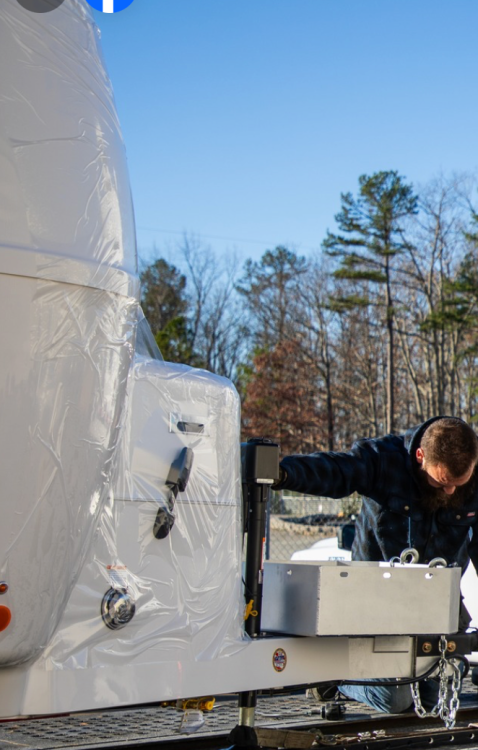

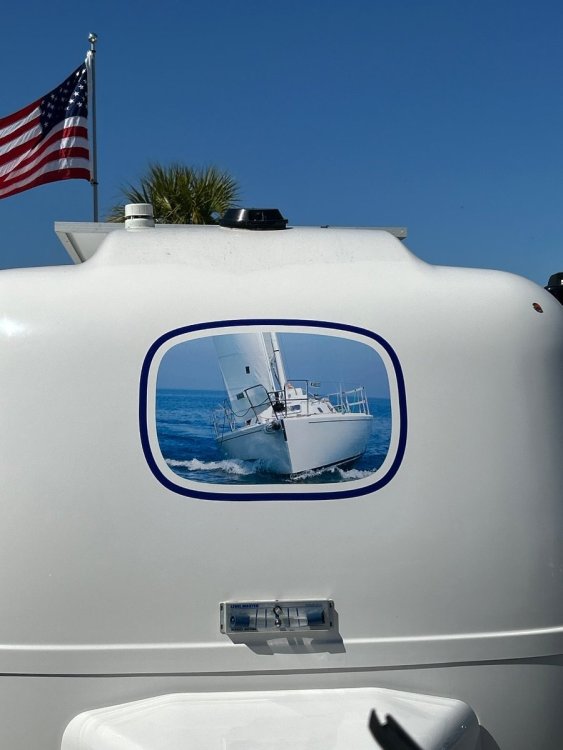



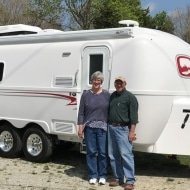

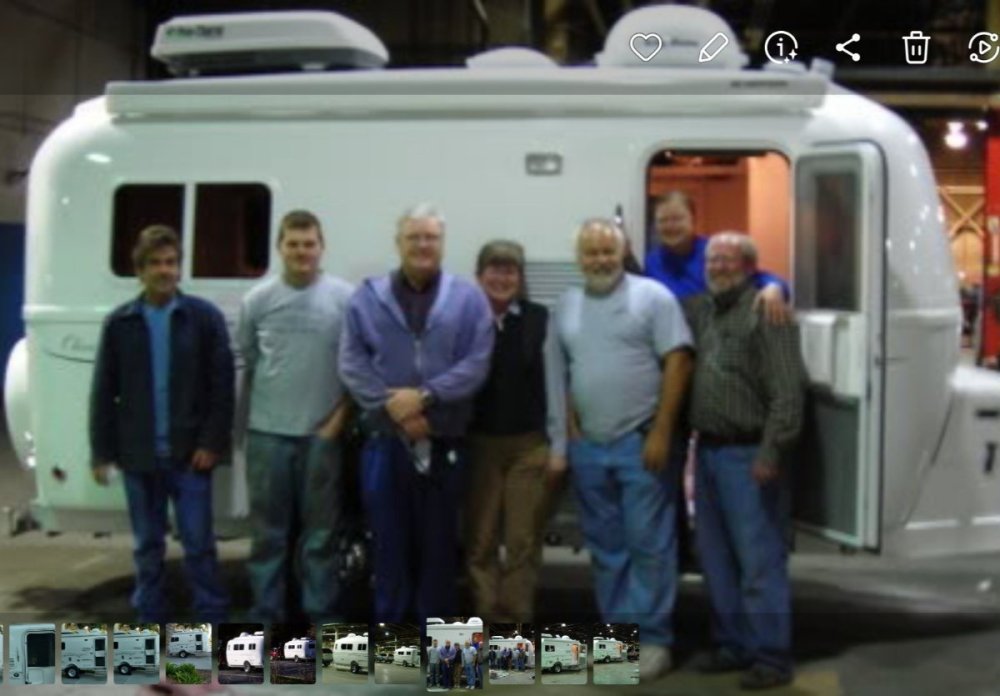
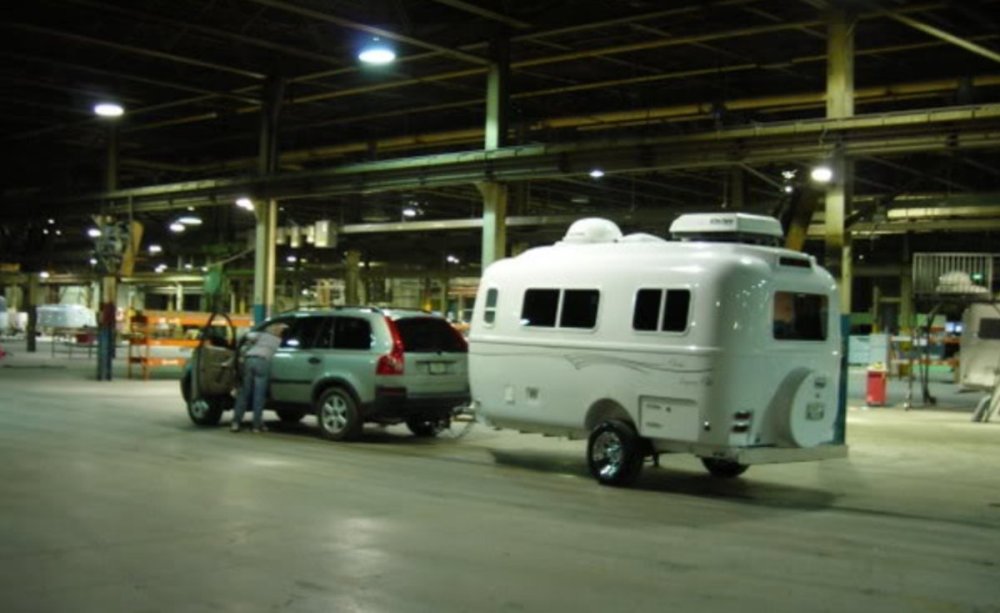

.thumb.jpg.ad0e79db81f134d7be4513a72b1dea76.jpg)



